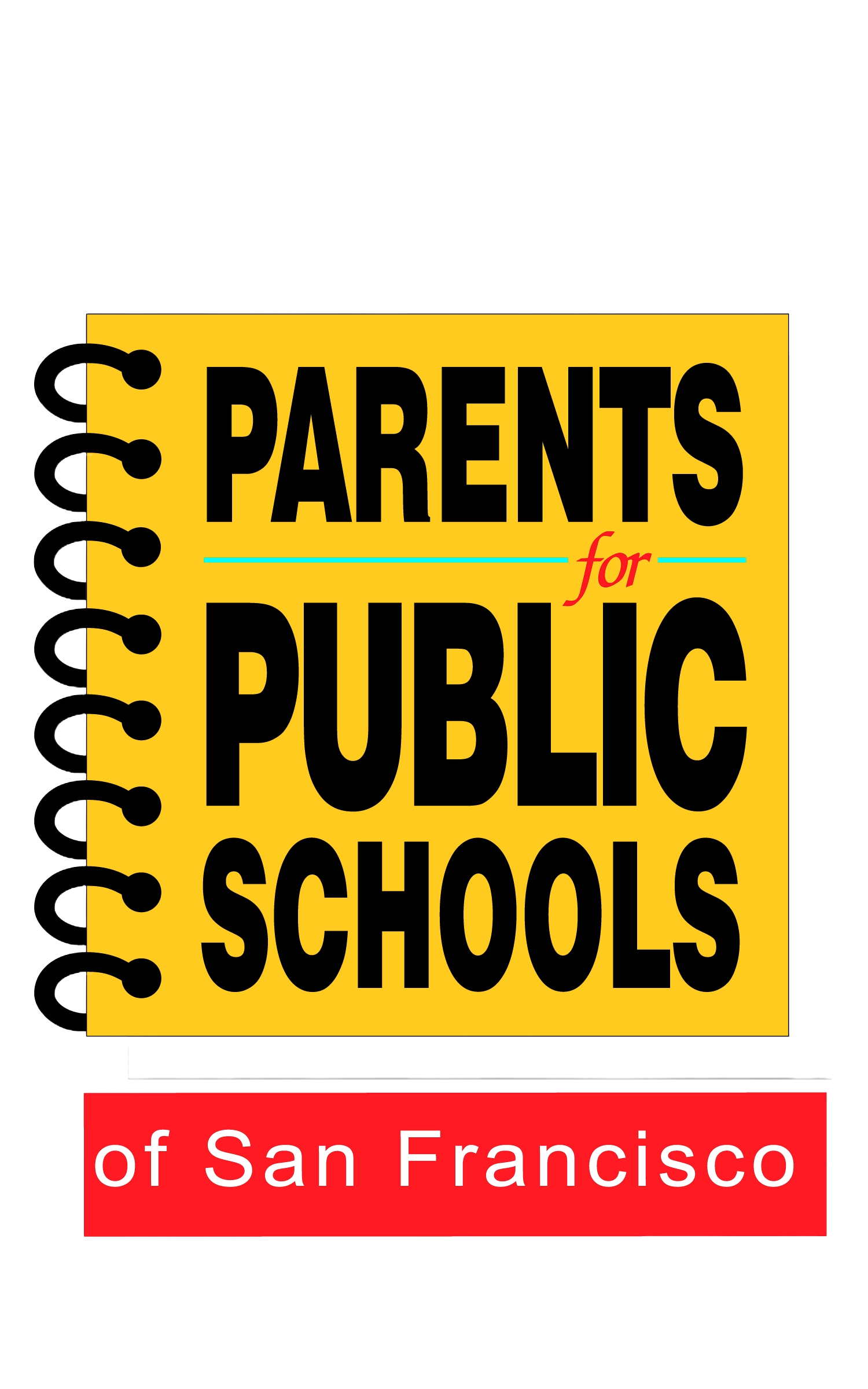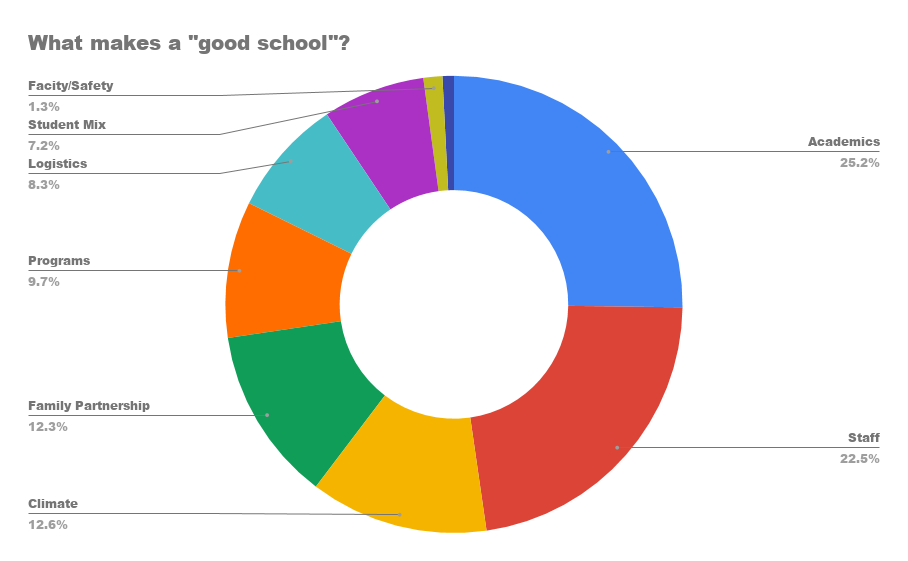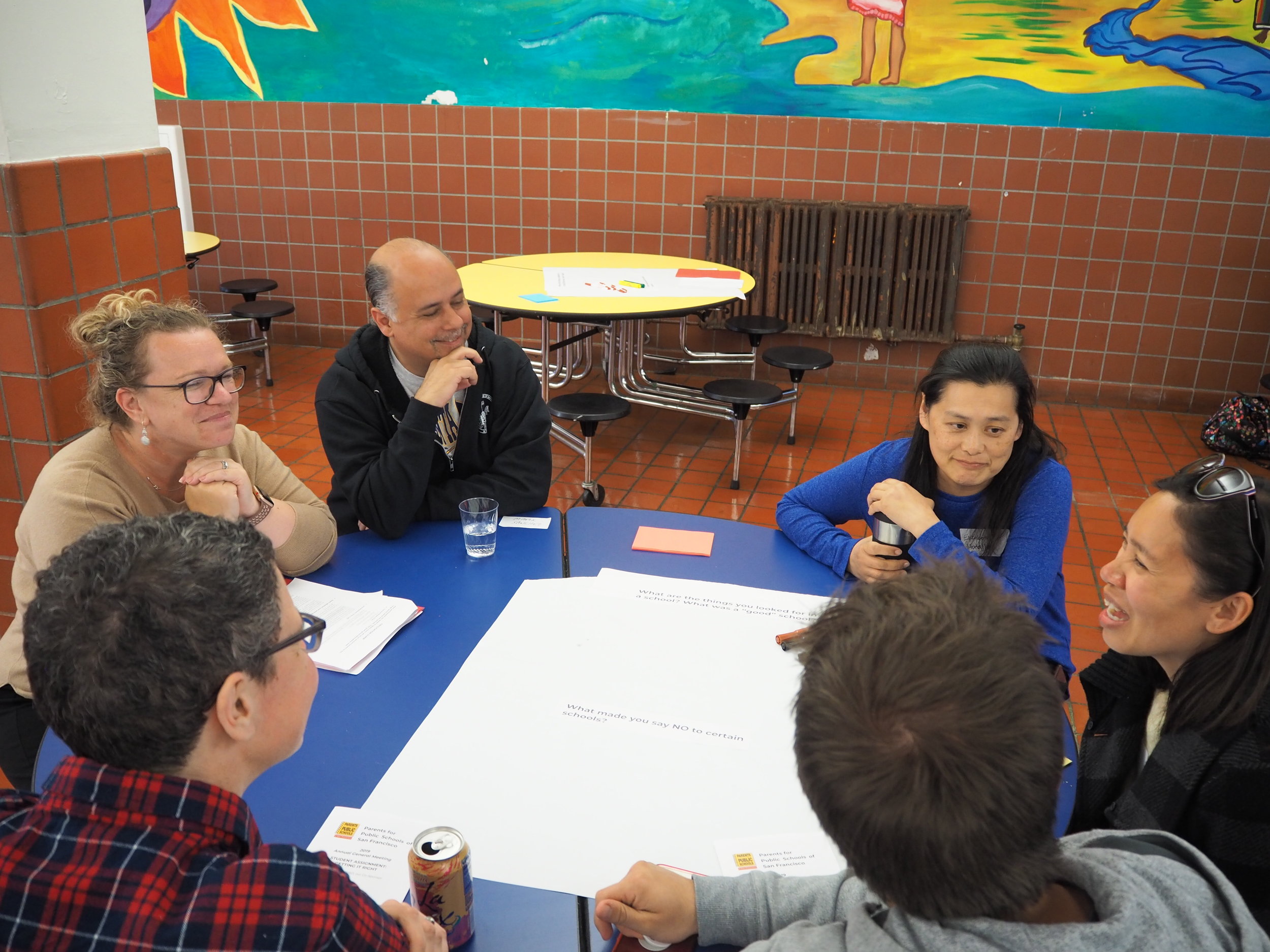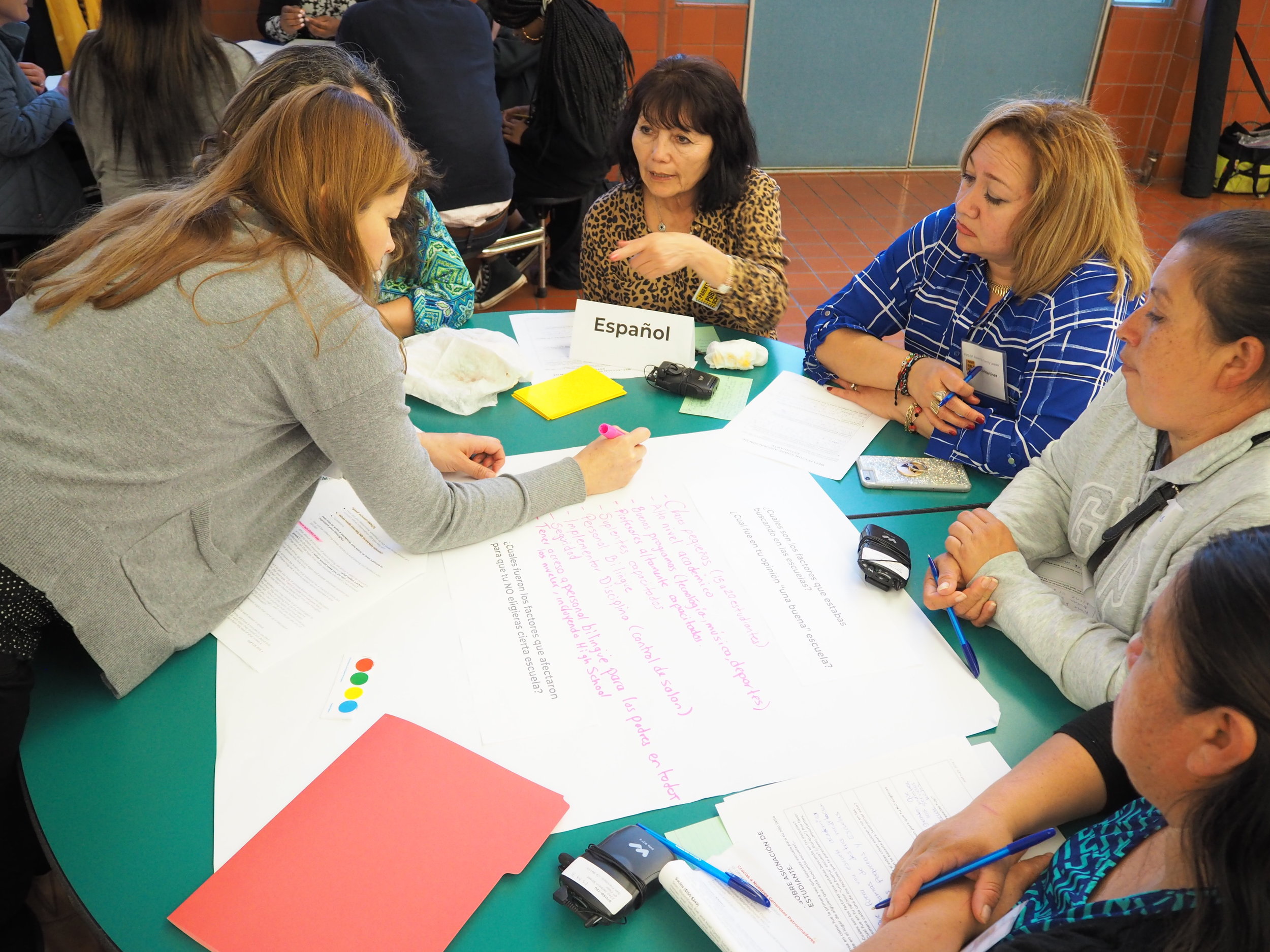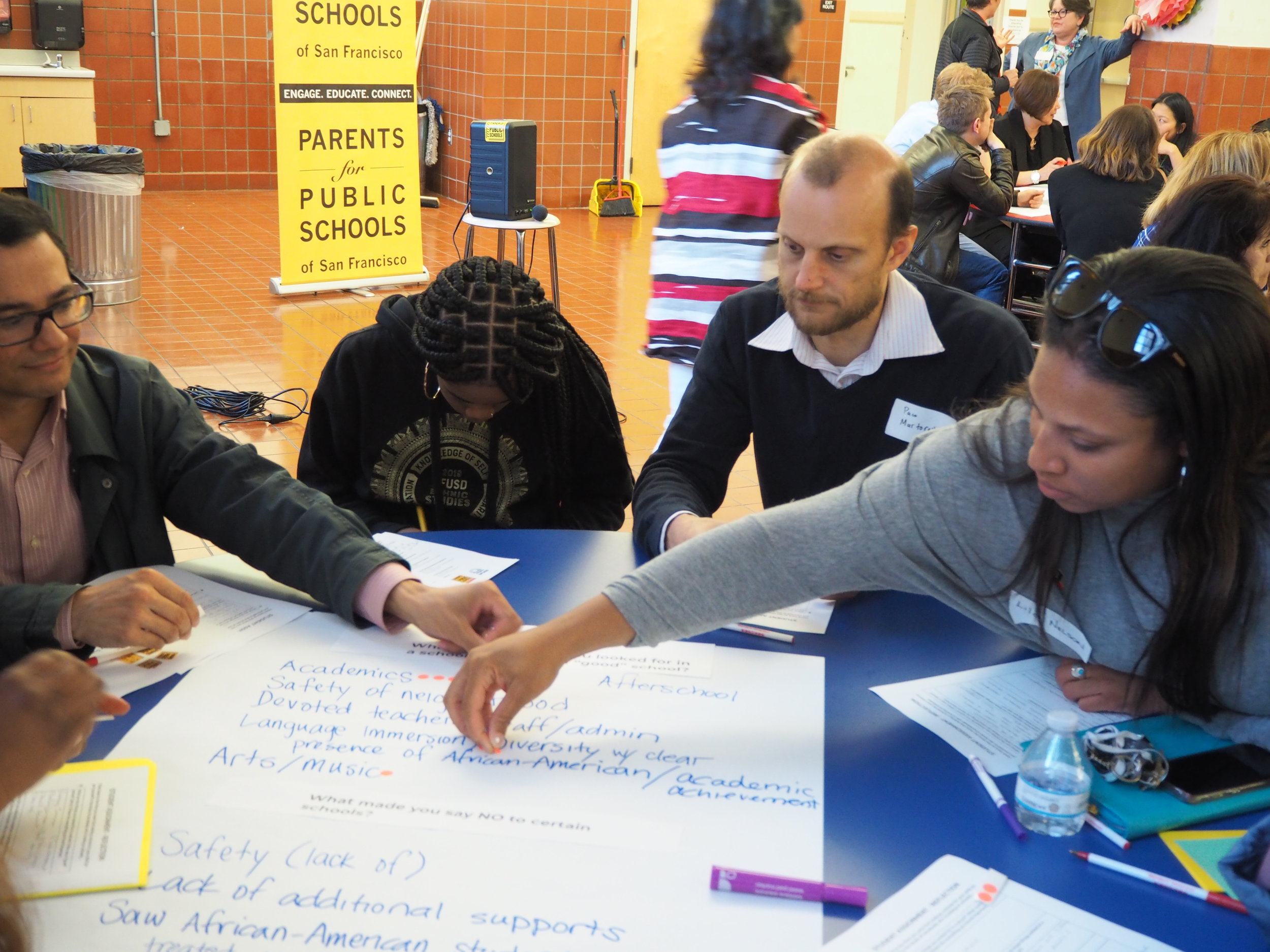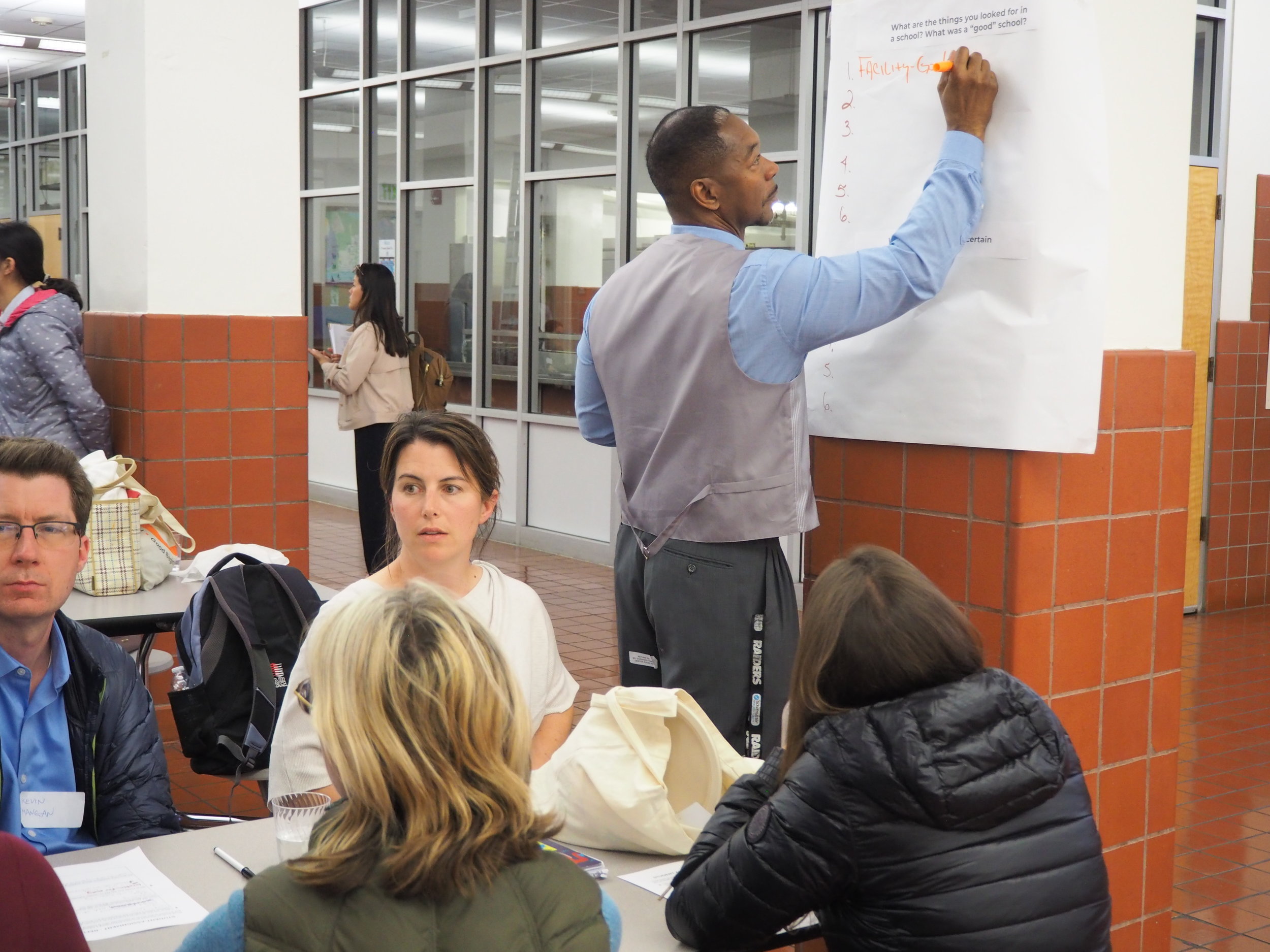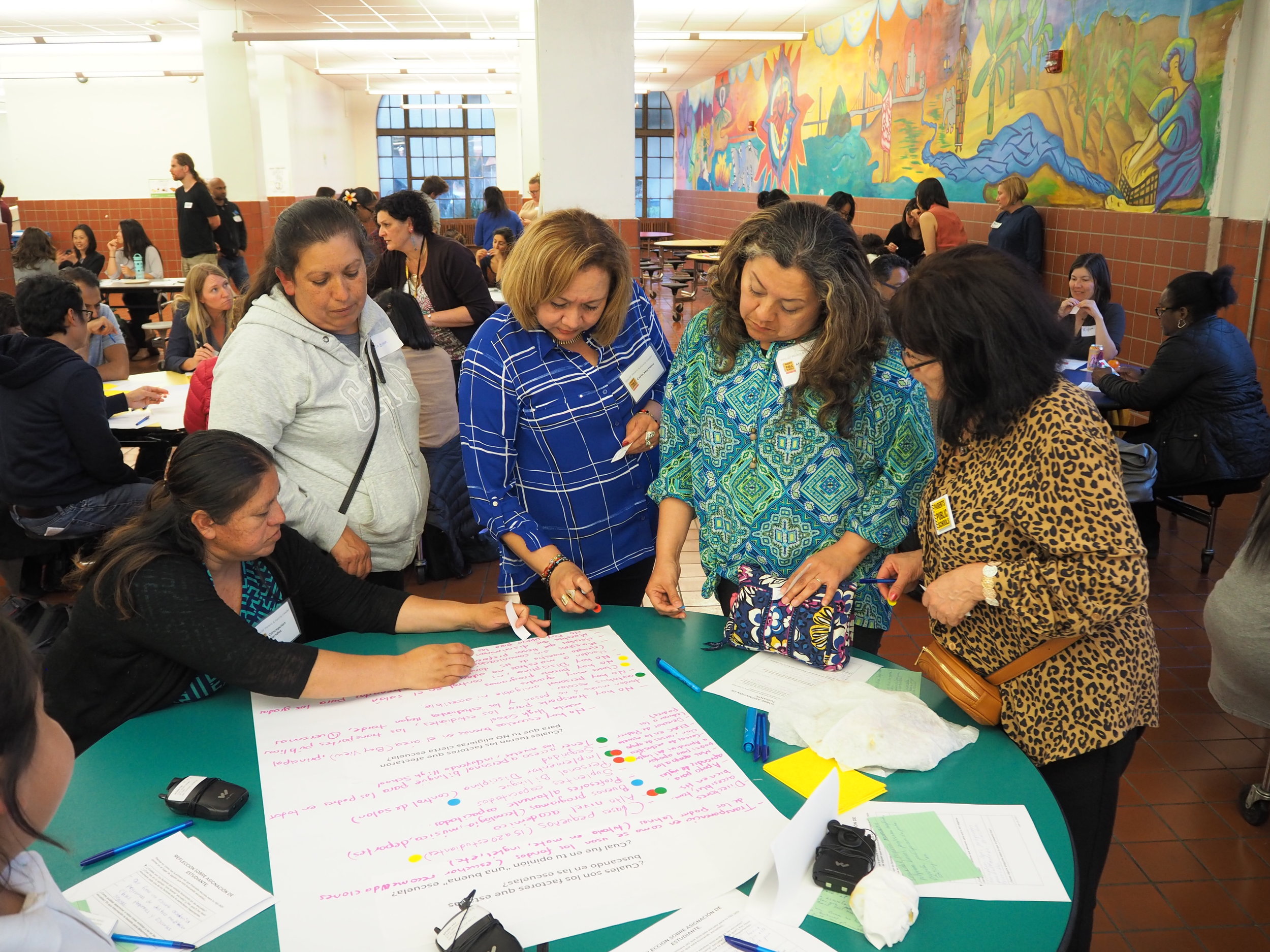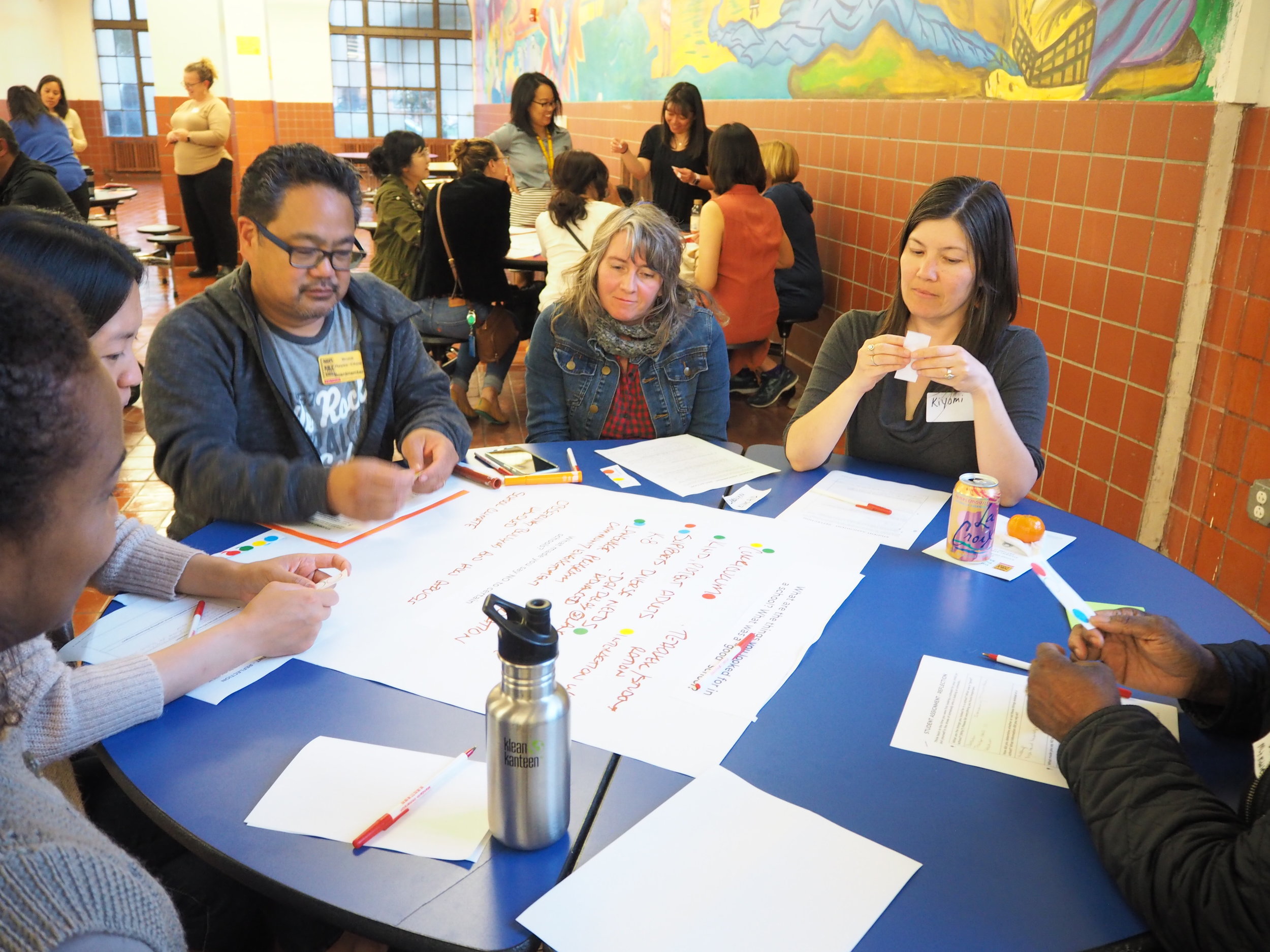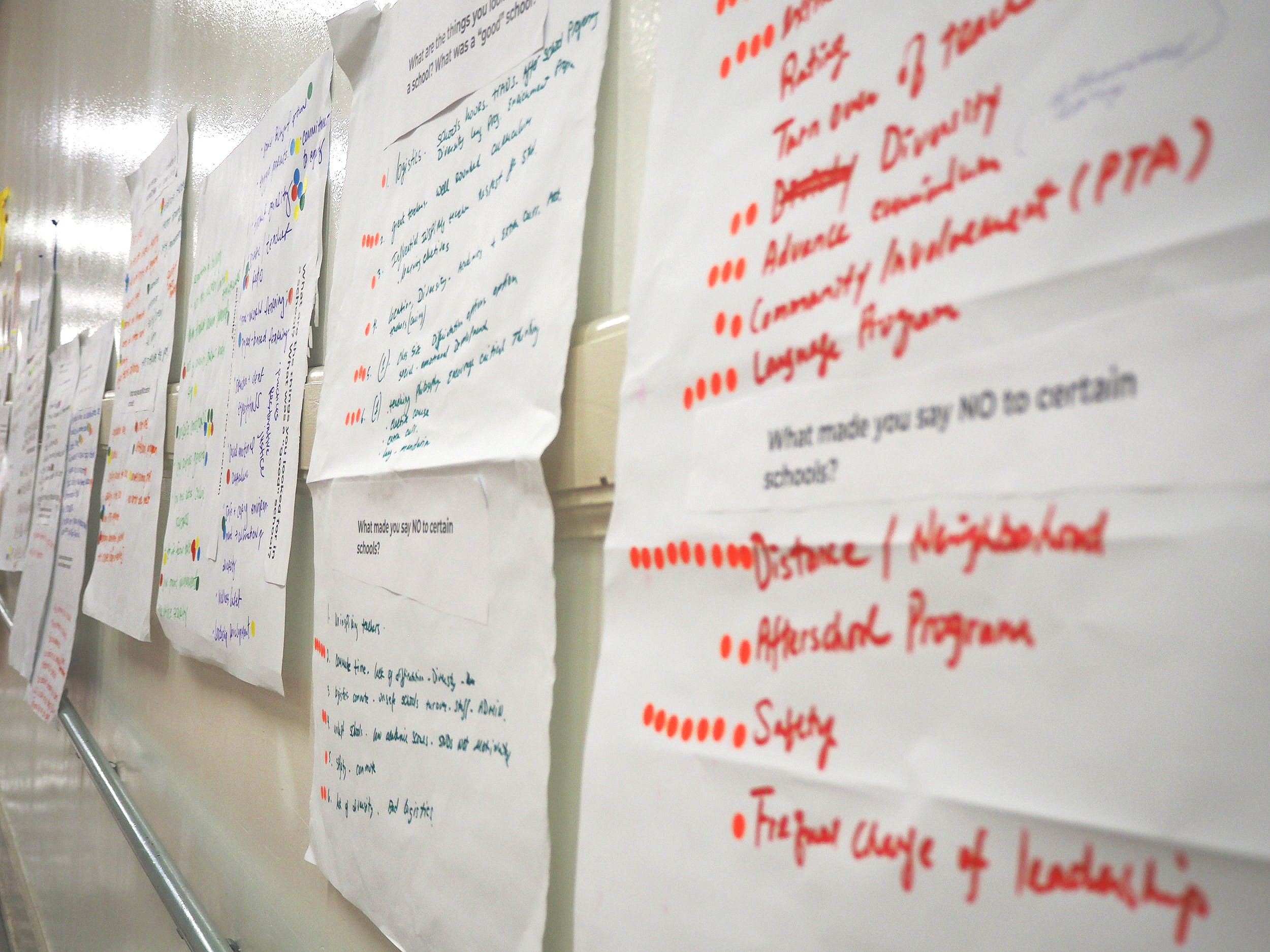Student Assignment: Getting it Right. Here is what we learned from YOU at our AGM!
At PPS-SF’s Annual General Meeting participants worked in groups to share perspectives on our student assignment system. We have transcribed, translated, and analyzed what was shared.
A small group shares ideas on chart paper
Over 150 community members attended our Annual General Meeting held at Mission High School on April 30, 2019. There were two parts to the evening, a presentation in the Mission HS auditorium, followed by small group discussions in the cafeteria. The presentation included an overview of the current work being undertaken by SFUSD to look at possible alternatives to the current student assignment system as directed by a SFUSD Board of Education resolution passed in December.
At the meeting, attendees broke into groups of 8-12 and took part in facilitated discussions around their own experiences with the student assignment system, what they viewed as attributes that make a school a “quality school, what information they look at when assessing schools, and what would make them “say no” to a school. Responses to the questions about what makes a quality school and what makes someone “say no” to a school were written on chart paper and prioritized by the groups using “sticky dots.” We have organized the feedback received so we can share key takeaways with participants, SFUSD leaders, and the community at large.
In looking at the feedback, we transcribed and sorted all of the responses by theme and then assigned weight to answers based on the number of dots received.
When it came to the question of “What makes a good school?” participant responses revealed that strength and substance of academics and the quality and tenure of school staff are key factors, representing almost 50% of responses. Digging deeper, the academic criteria most cited were high average test scores, the type of academic program or curriculum offered (project-based learning, language programs, differentiated learning), and small class sizes. When discussing the role of staff, participants most highly valued “dedicated,” “excited,” “inspiring,” teachers who “collaborate deeply” with one another. Also important was the availability of bilingual staff, principals who are “accessible” and have “vision,” and the retention rate of teachers and principals.
Another theme that emerged (12.8% of responses) was the importance of social-emotional learning and school climate. Many responses mentioned “strong school community,” “connections,” and a “student-centered” environment while others mentioned the importance of programs like restorative practices and resources like wellness centers.
Family partnership was also called out (12.3% of responses) as a key component of school quality. Responses noted that good schools have strong PTAs, families feel welcome and are engaged with the school and communication is clear, frequent and two-way.
Important programs noted that are part of a “good school” include arts, music, technology, sports, library, after-school programs, and support for English Learners.
Lower on the list but still important to some participants was the location of the school, the diversity of students, the safety of the school and the cleanliness/quality of the school infrastructure.
The second prompt discussed by groups was “What made you say “no” to certain schools?” Interestingly, though location, physical space and safety were towards the bottom of the list when it comes to factors that make a “good school” these factors were those most likely to make participants “say no.”
“Logistics” which accounted for about 34% of responses includes things like “location is too far,” “no transportation,” and “start time is too early.” Concerns about the school facility and/or safety (17% of responses) included many concerns about safety/security within the school, in the neighborhood, and on the commute, but also included “first impressions” of the building, and the perception of an “unkept school.”
The importance of social-emotional support and school climate showed up here (14% of responses) as it did in the prompt about what makes a “good school.” In situations where these factors prompted participants to “say no” the reasons ranged from seeing “kids that don’t look happy,” “no control in the classrooms,” reports of bullying and seeing “the way adults handle bullying,” and also observed mistreatment of certain groups: “racism/homophobia and other isms among staff.”
Responses about staff (13%) academics (6.5%) and programs (6.5%) reflected almost the mirror image of what participants said made schools good. Poor leadership, “low teacher retention,” “low test scores,” “uninspiring teachers,” and large classes as well as a lack of arts, sports, language pathways, and strong English Learner support were cited as dealbreakers for some.
Finally, some participants (7% combined) noted that lack of low family involvement, poor communication, and lack of diversity among students were reasons they said “no,”
Attendees also reflected on paper handouts (but didn’t discuss or chart responses) about what information they relied on to make determinations about how “good” a school is.
Tours and other in-person observations were the most common response (37%) we recorded. In addition to attending formal tours, families “looked at classroom walls,” “asked the principal questions,” “attended community events,” and “reflected on how I felt as a parent walking in.”
The next most frequent strategy was “talking to someone.” Word of mouth was used by 26% of participants to assess school quality and included “talking to parents with kids at the school,” asking a co-worker, consulting a crowd-sourced spreadsheet, talking to kids, and relying on “reputation."
Many people also look at school information/review websites (15%), the SFUSD website (7.5%) and various other sources of data (8%). This includes looking at information and ratings on Google, Yelp, Greatschools, and Asianamericanvoter.org and also comparing school data sourced from government databases like the California School Dashboard, and SFUSD accountability data like individual school accountability highlights and Balanced Scorecards.
Other sources of information include PPS-SF ambassadors (yay!), PTAs, and the Enrollment Fair or Enrollment Guide.
Next Steps
PPS-SF plans to use the feedback gathered at the AGM to inform our recommendations to SFUSD and to gather initial input that we hope will guide the board’s priorities as they move forward. We have already shared the data we collected with members of SFUSD’s leadership and look forward to continuing to keep the voices of families at the forefront of the ongoing process of considering changes to the SFUSD student assignment system.
As we noted previously, SFUSD leaders were clear at the AGM in stating that we are at the very beginning stages of looking at possible changes to the assignment system and the current system will still be in place next fall.
The best way to stay up-to-date on this topic is to attend Ad Hoc Student Assignment Committee meetings. This is where the school board hears from experts, staff, and members of the public and has an opportunity to discuss issues related to student assignment and potential policy changes. The are no more meetings until the fall, but we expect the committee to be very active after school resumes. The committee has a web page with links to presentations and reports from previous meetings.
